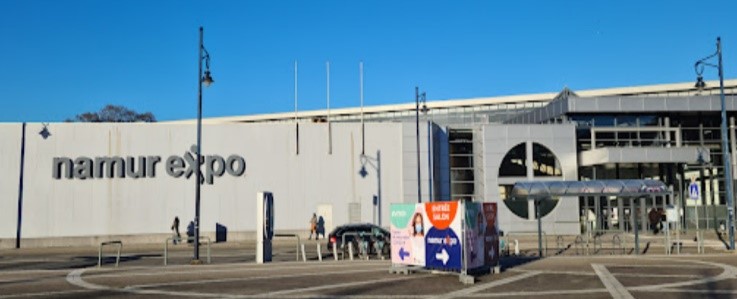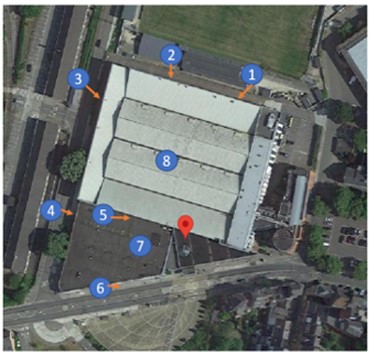Namur Expo is a building salvaged from Expo 58 in Brussels. It has already undergone energy renovation work (replacement of the heating system). Other renovation projects are underway, such as the renovation of the slab and the renewal of the electrical installation.
Owned by the BEP and operated by the Easyfairs agency, the BEP wanted to have an energy vision to make Namur Expo efficient in terms of energy and technology in order to convert it into Halls 2.0. WattElse was selected to carry out the energy study.
Presentation of the complexe
Namur Expo is an 11,000 m² site located in the municipality of Namur. The building, owned by the BEP, is managed by Easyfairs, which coordinates the organization of nearly 40 events per year on site. These events attract between 150 and 200,000 visitors a year.
Since its installation in the municipality of Namur, the building has not been the subject of any envelope work or a reflection in the broad sense on its energy consumption. This is why the BEP, wishing to apply for ERDF funds to finance the energy renovation of the site, called on the services of WattElse to develop together a relevant energy strategy.
Different options studied
Initially, WattElse focused on analyzing the site’s energy consumption. Although the last few years have been strongly impacted by the health crisis, the consumption of a “normal” year was defined. 53% of the site’s consumption is consumed in fuel form and 47% in electrical form. Electricity consumption is mainly induced by exhibitors who extract electricity for their stand (lighting, screens, electrical equipment).
Based on this observation, various improvement measures were studied:
- The insulation of the envelope for which two alternatives have been quantified: one version using biosourced materials (cellulose wadding, wood fiber panels, hemp concrete) and the second using conventional materials (PIR sandwich panels or rockwool, PUR boards). The implementation of the proposed solutions would make it possible to achieve savings of 65% to 70% on fuel consumption.
- The optimization of heat production systems has been studied according to 3 alternatives: the gas condensing boiler, the biomass boiler (chip or pellet) and the heat pump. Each of the techniques has its advantages and the choice will be made according to the selection criterion favoured by the BEP;
- The ventilation: innovative solutions combining heat emission and room ventilation have been identified (rooftop);
- The installation of photovoltaic panels: the photovoltaic potential of the site was also studied. Despite the large surface areas available, the exploitable potential for self-consumption is low insofar as the majority of consumption takes place during the less sunny months. In the medium term, models based on energy communities could make sense in order to further exploit the potential of the site’s roofs (and/or walls).
This study shall lead to the development of a roadmap for 2050 aimed at energy sobriety and the reduction of the carbon impact of energy consumption.


